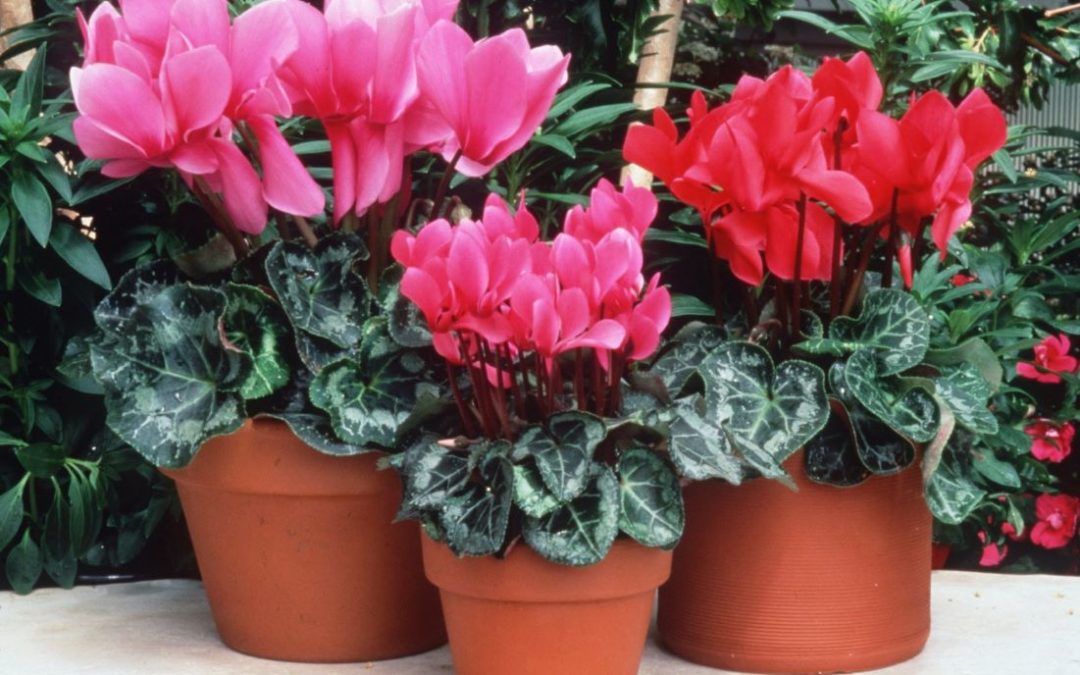I love the bustle of the winter holidays. If I regret taking on extra projects, the sight of family faces around the table at Thanksgiving makes all of the work worthwhile. You can use all kinds of things to decorate for the holidays-live plants, foraged stems, fruits and cones from our gardens and cut boughs to invite the holiday spirit into your home and life.
Everyone is familiar with the ubiquitous Christmas Poinsettia all gussied up with fancy foil and ribbons, but did you know that the Aztecs, starting in the 14th century, used the sap to control fevers and the bracts to make textile dye? They called the plant ‘Cuitlaxochitl’ which means excrement flower. Birds ate the seeds and the plants would germinate magically from the excrement. In their native habitat poinsettias are perennial shrubs that grow to over ten feet tall. The history and lore of our favorite holiday plants is fascinating. We love all of these bits of idiosyncratic information. It makes growing plants much more fun if you know about their origins and uses
The first American Ambassador to Mexico, Joel Roberts Poinsett, is given credit for bringing poinsettias to the United States in 1828. Because of his interest in botany, he explored the Mexican countryside looking for new plant species and discovered a weedy shrub with large red flowers. He took some cuttings back to his greenhouse in South Carolina and the rest, as they say, is history. Today this florist crop is commercially grown in every state and represents 85 percent of the potted plant sales during the holidays. There are varieties available in a multitude of colors, though the majority of Americans prefer the classic red.
One of the most common misconceptions about poinsettias is that the flowers are the large, colorful, leaf-shaped structures. The showy colored parts are actually modified leaves called bracts. The flowers or cyathia are the small yellow structures in the center of the bracts.
Basic poinsettia care is quite easy. Morning sun is ideal, with nice, bright indirect light the rest of the day. Daytime temperatures between 60 and 70 degrees and nights around 55 degrees will help to maintain the bright coloration of the bracts. Water your poinsettia when the soil is dry and make sure any excess water can drain away.
Another of my favorite winter plants is the cyclamen. The color palette ranges from white to pink, red to purple, with some striped, ruffled and even fragrant varieties. Flower petals are reflexed back and stand erect above the flowers. Many varieties have silvery overlays atop sage and dark green veining. The leaf variegation in the species is thought to be a form of camouflage to reduce the risk of being eaten by grazing animals. I told you that all of this trivia was interesting.
The most important tip we can give you for cyclamen success is to keep your cool during the blooming season. The cooler the room, the better the cyclamen will like it. Never water the crown of the plant as you might rot that tuberous corm. Misting the leaves is appreciated, as is deadheading old leaves and flowers. Just remove spent flowers with a sharp tug. This action actually helps to induce new growth from the corm.
And finally, I adore the queen of all bulbs, the amaryllis. Quickly becoming a superstar amongst blooming plants, amaryllis are easy, spectacular, and very diverse in color and flower size.
The legend of Amaryllis is the best kind of story, one of love, passion and devotion. Amaryllis was a virginal nymph who fell in love with Alteo, a cold-hearted shepherd. In order to prove her love, this cad required that she bring him a flower that had never before existed in the world. Amaryllis consulted the Oracle at Delphi, before piercing her heart with a golden arrow on Alteo’s doorstep. When he opened his door, he discovered a flower with crimson petals that had sprung from her heart.
To grow amaryllis, you need to know that they are warm climate plants. During the rooting period, applying bottom heat greatly speeds up the growing process. It is also very important to avoid over-watering at this stage. So pot it up, water it once, put it in a warm location, and forget about it until you see some growth. After that it’s just sit back and watch the show. When the plant has finished blooming, keep it growing until summer when you can put it outside in the garden. After Labor Day, remove the bulb from the ground and put it away for its dormancy period in a cool, dark, dry place. Mark your calendar for 2 to 3 months following. This is when you will re-pot your bulb and start the cycle all over again. Amaryllis bulbs get bigger from year to year, which means they will produce more flowers every year. Long-lived, these bulbs can produce flowers for seventy-five years. That’s an excellent investment.
As the year tumbles into winter, the urge to light up the darkness is hard to resist. Although we feel that winter is a time for reflection and incubation, there isn’t anything untoward with trying to stave off the cold with live to brighten the dark days and long nights. Spring will be found simply by waiting for the world to spin.

